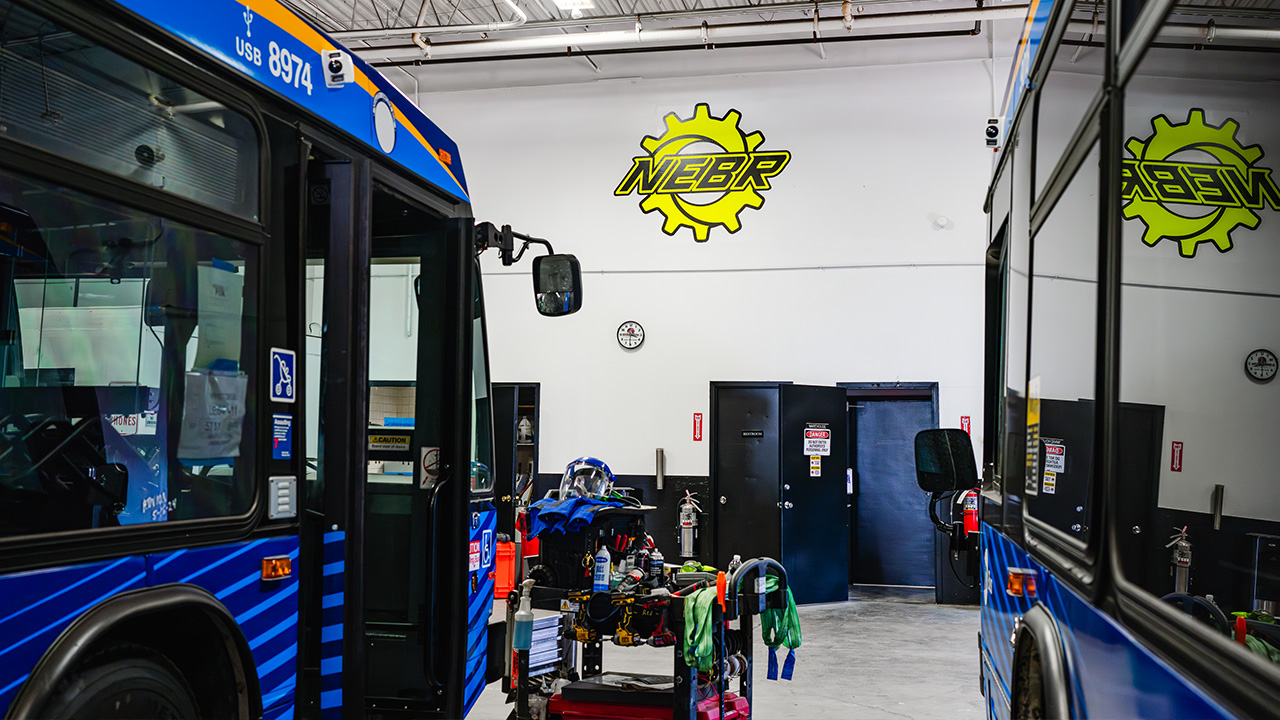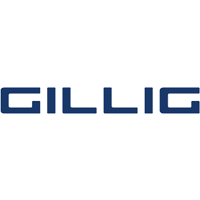Managing a fleet of buses at Northeastern Bus Rebuilders comes with a lot of moving parts—literally and financially. From scheduling routes to keeping vehicles in top shape, fleet managers juggle countless responsibilities. But one of the most challenging aspects of fleet management is understanding the true cost of bus repairs. This is where bus repair cost analysis becomes a critical tool. By analyzing repair costs accurately, you can make smarter financial decisions, plan budgets effectively, and maximize your fleet’s uptime.
Understanding Bus Repair Cost Factors
When thinking about bus repairs, many fleet managers focus only on the most obvious costs: labor and parts. But a detailed bus repair cost analysis reveals that many other factors can influence the bottom line. Understanding how regular bus maintenance saves costs is fundamental to repair budgeting.
Consider the following variables:
1. Bus Age
Older buses naturally require more frequent repairs due to general wear and tear. Components like transmissions, engines, suspensions, and braking systems degrade over time, and the older the bus, the higher the likelihood of simultaneous component failures. Moreover, sourcing parts for older models can be challenging. Some parts may no longer be in production, requiring either expensive custom fabrication or purchasing from specialized suppliers at a premium price.
For instance, a 15-year-old diesel bus may need a rebuilt fuel injection system—an expense that newer buses rarely face. When budgeting for repairs, always factor in both the increased frequency of maintenance and the potential premium cost of rare replacement parts.
2. Usage Patterns
Not all mileage is created equal. Buses used in high-mileage urban routes, with frequent stops, constant acceleration, and idling, experience much more wear than buses primarily used for long-distance highway routes. Stop-and-go traffic increases stress on brakes, transmissions, and engine components, accelerating wear cycles.
Additionally, terrain plays a role; buses operating in hilly or mountainous regions experience more strain on drivetrains and suspension systems, increasing repair likelihood. When performing a bus repair cost analysis, it’s crucial to evaluate not just how many miles a bus travels, but the conditions under which those miles are driven.
3. Fuel Type
The type of fuel your buses use can have a significant impact on repair and maintenance costs. Diesel engines, for example, are built for longevity and heavy-duty performance, but they come with higher maintenance costs due to specialized components like turbochargers, high-pressure fuel pumps, and particulate filters. Servicing these systems requires technicians trained specifically in diesel maintenance, and parts are often more expensive than their gasoline counterparts.
Conversely, gasoline engines may have lower repair costs but shorter lifespans under similar workloads. Hybrid and electric buses introduce a new layer of complexity—batteries, electric motors, and regenerative braking systems require specialized diagnostics and repair procedures that can drive labor costs higher. Understanding how fuel type affects both repair frequency and expense is critical when calculating the total cost of ownership in your bus repair cost analysis.
4. Complexity of the Issue
Simple mechanical repairs like brake replacements or minor suspension work are relatively predictable. However, modern buses increasingly rely on electronic systems, hybrid drivetrains, and advanced safety features like collision avoidance, ABS, and stability control. Repairing these systems is not only more expensive but also requires specialized diagnostic tools and technician certifications.
Even seemingly minor issues can cascade into more complex repairs if overlooked. For example, a small sensor failure in a hybrid bus could trigger engine, transmission, and battery alerts, all of which require careful troubleshooting to avoid unnecessary part replacements. Accurately accounting for the complexity of potential repairs is essential to ensure your bus repair cost analysis reflects the true financial impact.
NEBR once oversaw a fleet where a single diesel engine repair spiraled into multiple replacements because we hadn’t accounted for the engine’s hidden issues. A simple patch turned into a major project costing tens of thousands of dollars more than originally anticipated. That’s why understanding the nuances of bus repair cost analysis is essential.
Key Components of Bus Repair Costs
Breaking down costs into components helps managers make more informed decisions:
- Labor: Labor costs vary widely depending on the technician’s skill level, location, and the complexity of the repair. Some repairs may require certified specialists, particularly for modern hybrid or electric buses.
- Parts: Choosing between OEM (original equipment manufacturer) and aftermarket parts is a major decision. OEM parts generally offer higher reliability and a longer lifespan, but they can be significantly more expensive upfront. Aftermarket parts may save money initially but could lead to more frequent repairs later on.
- Downtime: The financial impact of a bus out of service is often overlooked. Each day a bus is in the shop can result in lost revenue, additional rental costs, or overtime for other drivers. When performing a bus repair cost analysis, downtime must be included as a critical factor.
- Complexity of the Repair: Certain systems, like braking, HVAC, or advanced electronic controls, require specialized tools and training. Repairs that involve these systems usually cost more, but cutting corners can be dangerous and costly in the long run.
Repair vs Replace: Financial Decision Framework
One of the toughest decisions for fleet managers is whether to repair a bus or replace it. There’s no one-size-fits-all answer, but a good rule of thumb is to compare the cost of the repair to the bus’s current value and expected remaining lifespan.
If a repair costs more than half the bus’s current value and extends its life by only a few years, replacement may be the smarter financial choice. On the other hand, a well-executed repair could extend the bus’s life for a decade or more, saving money compared to buying a new vehicle.
For instance, in one of the fleets we managed, a mid-life overhaul initially seemed expensive. The upfront cost was high, but the bus ran reliably for another ten years, avoiding numerous small repairs that would have added up to more than the overhaul cost. This example shows why a careful bus repair cost analysis can prevent short-term thinking from undermining long-term savings.
Hidden Costs in Bus Repair Projects
Bus repair costs aren’t always as straightforward as the initial quote might suggest. Many fleet managers are blindsided by additional expenses that aren’t immediately visible, which can throw budgets off and delay decision-making. A thorough bus repair cost analysis should account for these hidden costs to ensure a realistic financial picture.
One of the most costly scenarios fleet managers face is when routine repairs escalate into emergency bus repair situations. These urgent breakdowns not only multiply repair costs through rush fees and overtime labor, but also create cascading expenses from route disruptions, passenger delays, and potential safety violations. Understanding how to prevent and manage these emergencies is crucial for maintaining realistic repair budgets.
Diagnostic Fees
Modern buses are increasingly complex, with integrated electronic systems, hybrid drivetrains, and advanced safety features. Finding the root of a problem often requires specialized diagnostic tools and trained technicians. In many cases, the diagnostic process itself can cost more than the repair, especially when the issue is intermittent or difficult to replicate. For example, a faulty engine sensor may trigger multiple system alerts, requiring hours of testing to pinpoint the actual cause. Fleet managers who overlook diagnostic fees in their bus repair cost analysis risk underestimating total repair costs and encountering unexpected expenses.
Downtime Losses
Every day a bus is off the road represents a financial loss. Downtime costs include lost revenue from routes that can’t be serviced, additional labor for rerouting drivers, and the potential need for spare vehicles or rental buses to maintain service schedules. Consider an urban transit fleet where a single bus is out for a week: the cost isn’t just the repair bill—it’s also the lost fare revenue, overtime for other drivers covering extra shifts, and any temporary rentals. When conducting a bus repair cost analysis, it’s crucial to factor in these indirect costs to fully understand the financial impact of repairs.
Secondary Repairs
Repairing one issue often uncovers others that must be addressed to maintain safety, compliance, or operational efficiency. For example, replacing a worn-out turbocharger in a diesel bus might reveal oil leaks, exhaust system damage, or degraded engine mounts that need simultaneous attention. Ignoring these secondary repairs can lead to repeat shop visits, escalating costs, and extended downtime. A proactive bus repair cost analysis should anticipate potential cascading repairs, ensuring that budgets are realistic and maintenance schedules are optimized.
Diesel Engines and Hidden Costs
Diesel engines, in particular, present unique challenges for fleet managers. Their components—such as high-pressure fuel pumps, turbochargers, and particulate filters—are more expensive to replace or repair than gasoline alternatives. Additionally, diesel systems often require certified technicians and specialized diagnostic equipment. Understanding hidden diesel engine repair costs is crucial for accurate budgeting, because even minor issues can become major financial burdens if overlooked.
By anticipating these hidden expenses, fleet managers can avoid overspending, reduce unexpected downtime, and make smarter use of their maintenance budgets. Incorporating these considerations into a comprehensive bus repair cost analysis helps ensure that both immediate and long-term financial implications are accounted for.
How to Budget for Major Bus Repairs
Budgeting for major repairs is an art and a science. It requires historical data, foresight, and a proactive approach. Here’s a step-by-step framework for creating a solid bus repair budget:
- Track Past Expenses: Review previous repair records to identify trends in costs and recurring issues. This historical perspective is invaluable for estimating future expenses.
- Forecast Future Needs: Consider the age, mileage, and manufacturer recommendations for each vehicle. Predictive maintenance can help you identify which buses are likely to need major repairs soon.
- Allocate Contingency Funds: Always set aside 10–20% of your repair budget for unforeseen issues. This cushion helps you handle surprises without throwing off your entire fleet budget.
- Engage Expert Technicians: Partnering with professional repair services ensures accurate estimates and prevents costly mistakes. Expert advice is a key component of any bus repair cost analysis.
Effective budgeting also requires strategic timing of major repairs. Incorporating seasonal maintenance planning into your budget allows you to schedule costly overhauls during off-peak periods, take advantage of better parts pricing, and avoid emergency repairs during high-demand seasons. This proactive approach can reduce major repair costs by 20-30% compared to reactive scheduling.
Cost-Benefit Analysis of Bus Repair Services
When deciding between different repair options, consider both short-term costs and long-term benefits. Cheaper services may save money upfront but could lead to recurring failures. Conversely, investing in high-quality services can extend your fleet’s life, reduce downtime, and lower long-term maintenance costs.
At NEBR, our professional bus repair services provide detailed cost breakdowns, helping fleet managers perform an accurate bus repair cost analysis and make informed decisions. Understanding the true value of quality repairs often reveals that a higher upfront cost can actually save money in the long run.
Long-Term Financial Impact of Repair Decisions
Every repair decision has long-term financial consequences. Minor repairs left unattended can escalate into major problems, leading to costly downtime and extensive replacements. Implementing a comprehensive fleet preventive maintenance plan reduces these risks by addressing potential issues before they become expensive emergencies.
Getting Accurate Bus Repair Cost Estimates
Accurate estimates are critical for effective bus repair cost analysis. Achieving accuracy requires:
- Detailed inspections
- Experienced, certified technicians
- Transparent communication and breakdown of costs
NEBR provides transparent pricing for expert bus repair services, ensuring that fleet managers know exactly what they’re paying for. Accurate estimates allow you to anticipate expenses, avoid surprises, and confidently plan your repair budgets.
Financing Options for Major Bus Repairs
Major repairs can put pressure on fleet budgets. Exploring financing options or phased payment plans allows fleets to maintain operations without sacrificing quality repairs. Common strategies include:
- Leasing programs for expensive parts or equipment
- Lines of credit for large projects
- Deferred payment plans to spread the cost over several months
Financing options make it easier to manage short-term cash flow while still maintaining a fleet in peak condition. A proper bus repair cost analysis can help determine whether financing makes sense for a particular repair.
Final Thoughts
A thorough bus repair cost analysis goes beyond just crunching numbers—it’s about understanding your fleet, planning ahead, and investing in long-term reliability. By factoring in labor, parts, hidden costs, downtime, and preventive maintenance, you can make informed decisions that keep your buses running efficiently and safely.
Proactive management pays off. A small investment today in expert repairs and preventive maintenance can prevent costly breakdowns tomorrow. For compliance and safety regulations, fleet managers should also stay updated with the latest guidelines from the Department of Transportation.
Contact our comprehensive fleet services team today to discuss your fleet needs and get a detailed bus repair cost analysis tailored to your operations.













